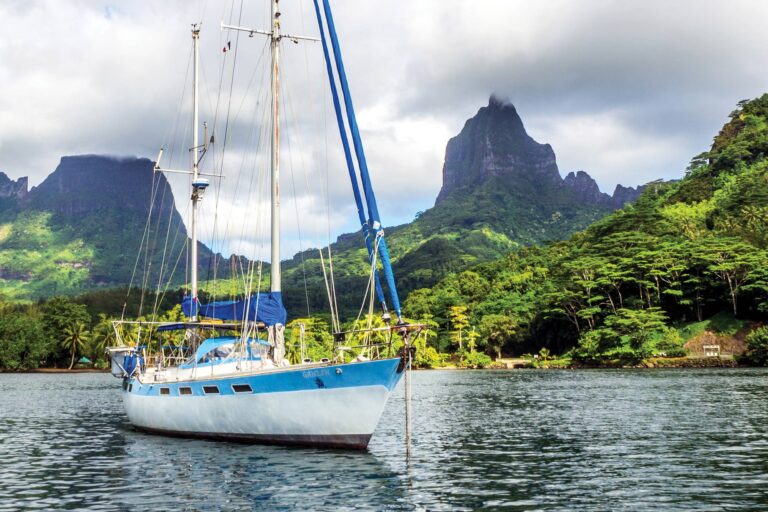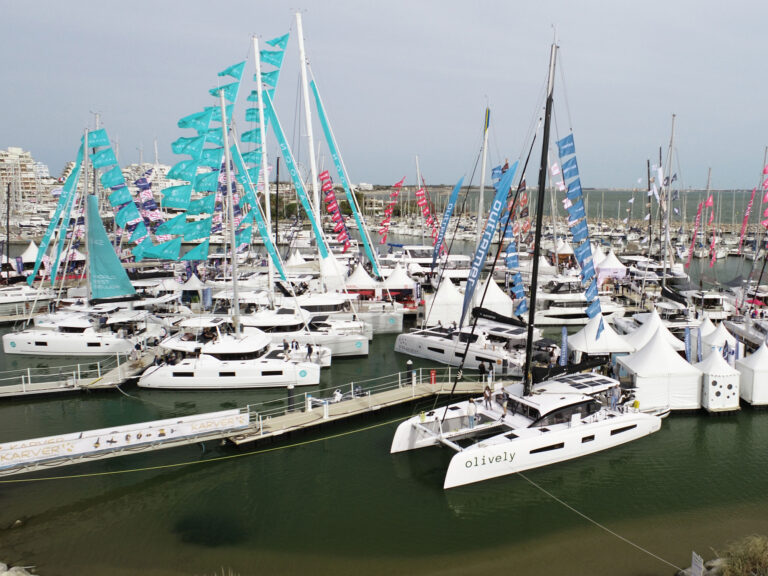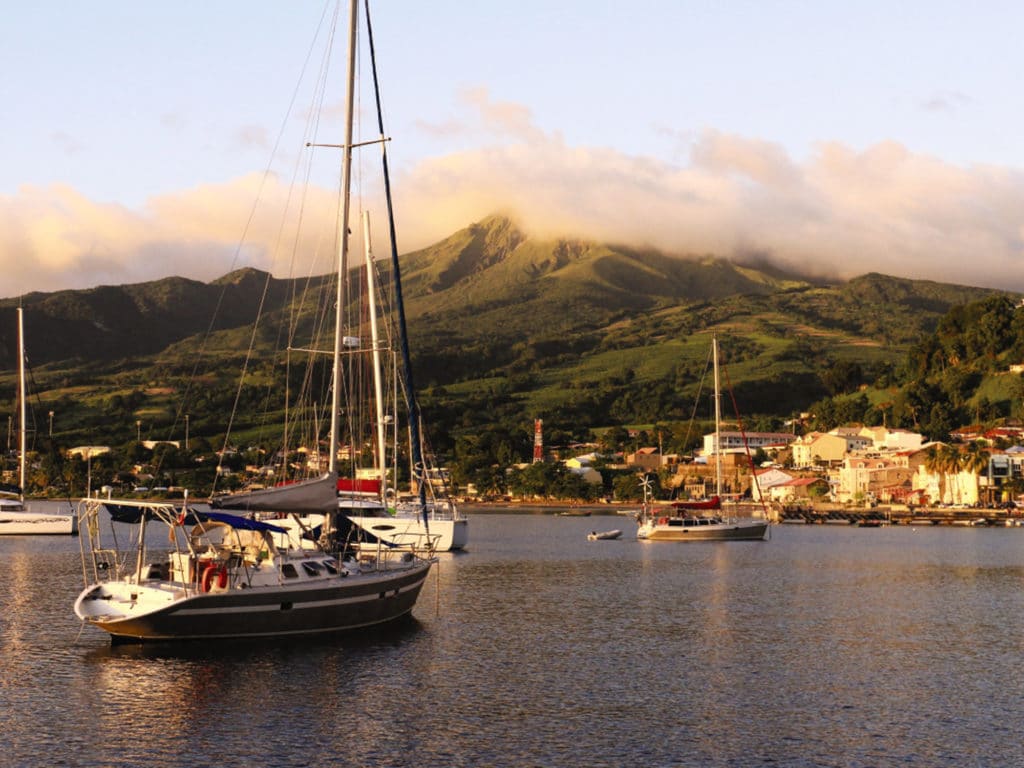
“Horizontal!” I shout to my daughter. She’s standing on the stern of the 54-foot W.I. Crealock design The Dove, anchored in Five Islands Bay off Antigua. She’s about to photograph the sunset—holding her iPhone10 vertically. “The world is horizontal!” I yell from the cockpit, my evening’s rum and tonic at hand.
“It’s vertical in my world!” she yells back. “Instagram doesn’t accept landscape mode!”
What do I know? I can’t teach these two kids of mine anything these days. They’re at that age, early 20s, and Dad, well, he’s just too old to understand.
Maybe I am, but I’ve made my living as a photojournalist who tells stories with pictures and words. Photography has been a part of my career since high school and into the US Navy, with a hitch in Vietnam as a JO3 (a journalist third-class petty officer). In my early 30s, I started a summer school for photographers—not because I had anything to teach, but because I had a lot to learn. I invited photographers from Life and National Geographic to Rockport, Maine, to lead one-week master classes. I learned a lot from those masters. For nearly 50 years, the Maine Photographic Workshops was, and now mainemedia.edu is, an international conservatory for the world’s image-makers, storytellers and filmmakers.
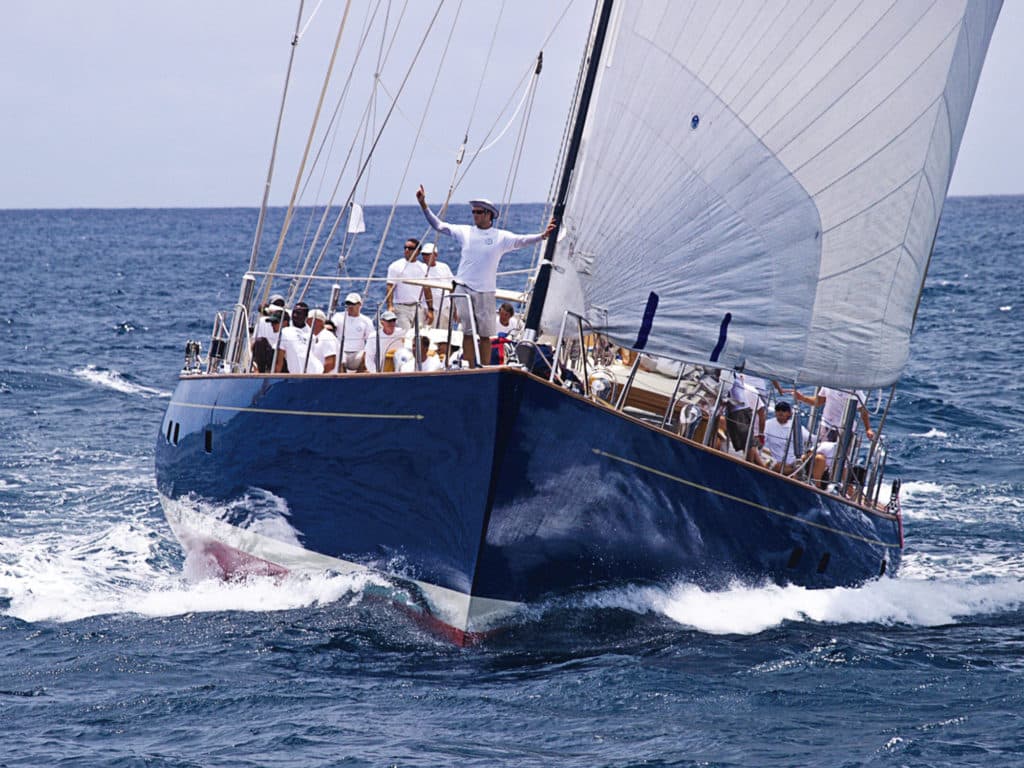
So you’d think I might know something about picture taking.
Well, I don’t. There’s too much to know, still too much to learn. I’m still trying to figure out every new technology. But the process of “seeing photographically” hasn’t changed in a hundred years. It’s not the camera that takes the picture;
it’s you.
‘Photography is like anchoring. It’s less about the anchor and more about the technique.’
Most of us on boats have a camera or two, and for a variety of reasons: to document our voyages and the destinations when we arrive, to capture the crew in embarrassing situations, and, oh yes, to record those sunsets at sea. We make photographs to share on Facebook and Instagram, to hang on the wall at home, to accompany a written article.
If you are getting serious about becoming a better photographer, I might be able to help.
What makes a photograph
We all make snapshots, even me. But for an image to be a photograph, a visual statement, one that involves a whole lot more than a friend’s face or a pretty sunset, there has to be something else at work.
Creating, finding or arranging a photograph is a juggling act with at least a dozen balls in the air. They include: the center of attention (what the photograph is about); placement (where to put the center of attention in the frame); quality of light (what is illuminated, and what’s hidden in the shadows); graphic composition (lines, spaces, shapes and diagonals); perspective (the illusion of three dimensions), foreground, middle and background; the frame (what’s in and what’s left out); the decisive moment (gesture); motion (stop it, follow it); exposure (shadow and highlight detail); depth of field (selective focus); the horizon line (keep it level); your point of view; and sharpness (focus and a steady camera).
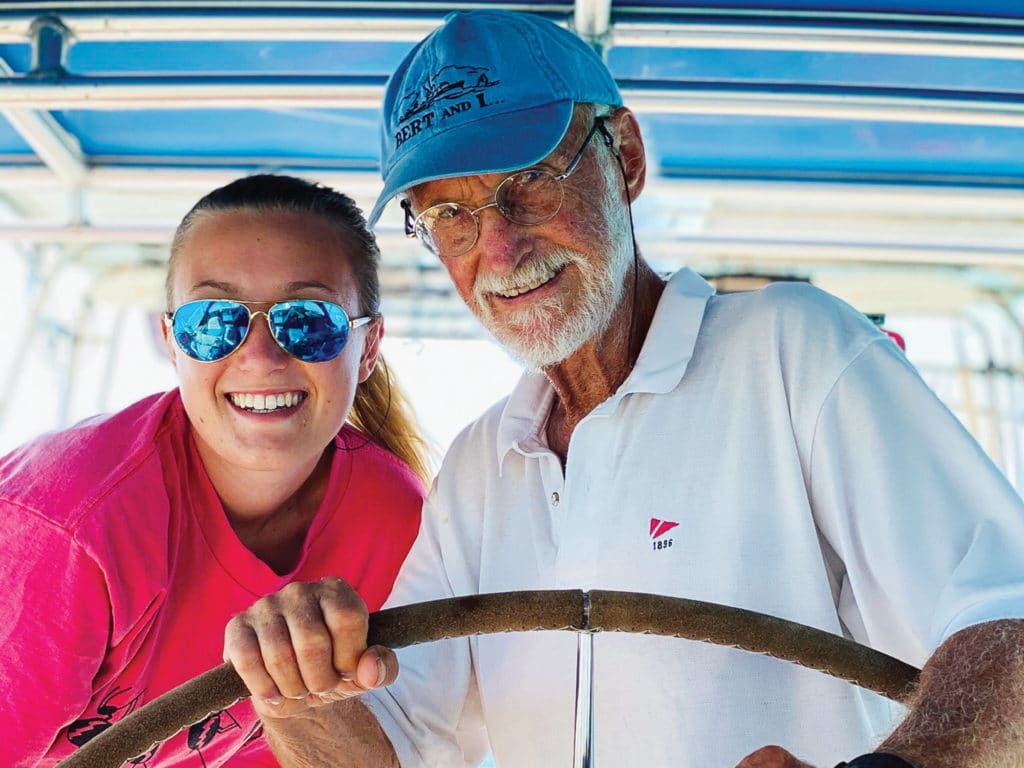
I’m sure I’ve missed a few, but these will do for now. The more you play with these elements, the less you’ll think about them. They become internal, automatic, and you begin to work intuitively. This is where we as artists work, where we discover and develop our own unique visual voice.
Getting better as a photographer, or to get better at being lucky as a photographer, is simple. You have to go out and make more photographs. Besides, it’s fun to just wander the streets or beaches on a remote island with your camera and see what you find. Some people bring back driftwood, stones or shells. Photographers bring back images.
Photographs, so the story goes, are realized three times: first, when seen through the viewfinder, then again on the light table or screen as you review your day’s work to find the one or two frames that stand out, and third, when those selected images are crafted and added to your portfolio or hung on the wall.
Just go out and see what you see. This is not serious work. This is play. Musicians use études to practice fingerings on their instruments. Photographers have a raft of études to practice as they develop their eye and camera skills.
For a photographer, études include: doors, walls and windows (arrange rectangles inside the frame, play with relationships and space); morning and evening light (mixed with storms and rain); motion (long exposures to blur, one-thousandth of a second to stop motion); one color dominating (but with one or two others to complement it); portraits (always better in shade because faces are softer and people are not squinting); jungles and gardens (always better after it has rained and the vegetation is wet); suspense (people, boats and things just coming together, not yet touching); negative space (nothing there, yet it says something about the subject); trapped spaces (triangles, diagonals and perspective lines); putting something in the foreground (to create three dimensions); playing with the horizon (what the top, middle and bottom of the frame each say about the scene); same scene, another day (different light, different shadows); and sea surfaces (reflections, distortions, riddles).
Looking at your photographs
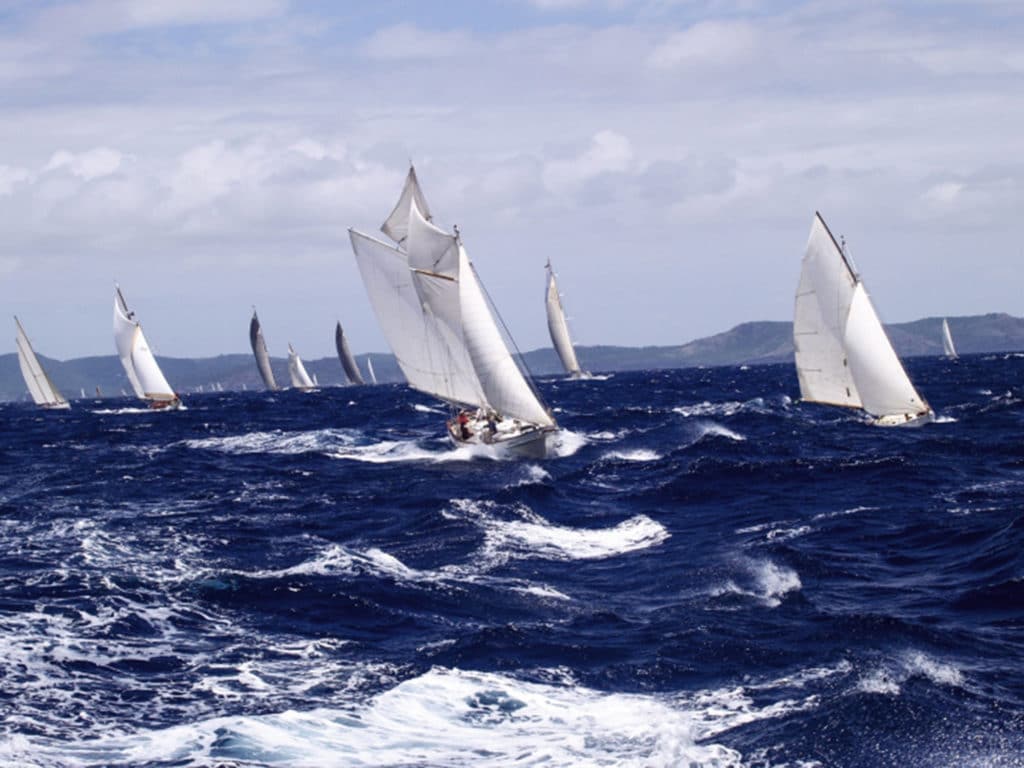
The only way to get better is to look at, and study, your own work. If you listen, your work will tell you what you’re doing right and, more important, doing wrong. In the process, you’ll make mistakes, and it’s from these mistakes that we learn the most. If you hate making mistakes, don’t call them mistakes. Call them an attempt, a test, an exercise, practice. It’s all part of the learning process.
While you are looking at your own work, look at what other photographers are doing too. The marine photographers I meet at regattas, races and boat shows are professionals. They make their living photographing boats and the yachting scene. Take a look at how they have seen our world on the water. Try to copy them. Painting students are required to copy their masters, in the process mastering technique. We can do the same.
It’s not the camera that takes the picture; it’s you.
Not going to a regatta, race or boat show anytime soon? Google these photographers and explore their websites: Billy Black, Benjamin Mendlowitz, Onne van der Wal, Corey Silken, Alison Langley, and me at dhlyman.com.
Case in point
I’ve been mentoring a photographer, Justyna Kramer. She’s the mate on The Dove, which charters in the Caribbean. For the past three years, I’ve watched her learn to find her voice as a photographer. She has discovered that she sees the world better in black-and-white than in color. That realization led her to a self-imposed assignment during quarantine in the Grenadines: upload five newly seen images to Facebook and Instagram each week. Kramer revisited images shot long ago, discovering that when they were converted into black-and-white, they jumped out. Then, ashore on the islands, she made new images, converting them to black-and-white as well. She has assembled this body of work into a series of online portfolios. You can see her work at justynakramer.myportfolio.com and use it as an example to assemble your own portfolios as well.
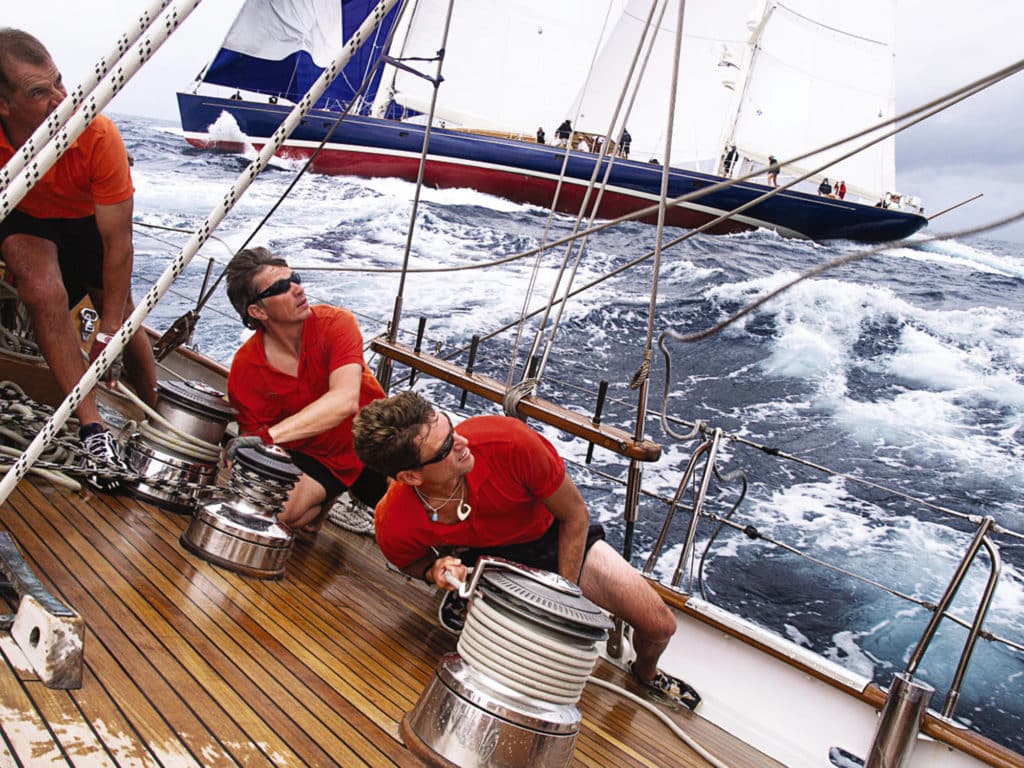
Building a body of work is what all artists do for ourselves, our inner artist. Themes might include landscapes, architecture, people, events, boats and harbors. No one pays us to do this, but we do it to get better. Someday, maybe someone will pay us.
Go out with your camera, even your smartphone camera, and find pictures that you can bring back to look at. Do this daily. Or at least weekly. When you have a portfolio of 20-plus images, take a one-week workshop or master class. Find one that requires a portfolio to attend. That way, you’ll likely be with other serious and accomplished photographers.
And share your images, your exploration of the visual and inner world. Doing so can be more than a career; it can even be a form of medication or therapy.
What’s in My Camera Bag
This combination of gear serves me well just about anywhere.
As a photojournalist, I’m not a gear nut, although I’ve owned and used dozens of cameras, from 8-by-10 and 4-by-5 to medium format, half a dozen 35mm film and, now, a digital SLR. But cameras and lenses are just tools. No matter how much gear you have, or how much cash you spend, the cameras will not make you a better photographer. In fact, all of that stuff can get in the way.
A long time ago, Bill Allard, a National Geographic photographer, told me about the KISS principle: Keep It Simple, Stupid. Start with one SLR camera and one lens. Learn to see, photographically, with those two tools. You’ll know when it’s time to acquire another lens or a more advanced camera. Your work, your images will tell you.
The best camera to have is the one in your hand, not the one in your camera bag or on the store shelf. Photography is like anchoring. It’s less about the anchor and more about the technique. If you are a photographer, you can make great photos with any camera, even your iPhone. Just learn its limits, and use them creatively.
My camera bag
These days, covering the cruising life, my camera and lens requirements are modest. I like it that way. My camera backpack, fully loaded, weights just 15 pounds. Inside this water-resistant Ruggard Outrigger 65 DSLR backpack, I can cram in my iPad Pro, my now-ancient Canon D70 DSLR camera and two lenses, and a short and long zoom. There’s room for two GoPros, a Joby GorillaPod tripod (the one with the bendy legs) and a Rode microphone for recording sound.
There also are pockets for extra SD cards, tools and wires, a HyperDrive multiport, and a LaCie portable hard drive.
With these tools, I can hit the road or the water on any assignment and feel confident that I am prepared for any shot.
The camera
My 2016 Canon D70 DSLR still does just what I need it to do. It records video and audio, shoots RAW and JPEG still images, and has a variety of functions that I seldom use. In short, it works.
I shoot in program mode most of the time, or manual. The camera comes with a pop-up flash to fill in faces and social settings at night. I’ve added a battery pack to extend shooting time, while adding mass to the camera—a heavier camera is more stable. Would I like a newer camera, one with more pixels, a full-frame sensor, more bells and whistles? Sure, but not at the asking price. What I have is adequate for the work I do and the way I see.
Remember, photography is about seeing, not about the equipment. The technical qualities of your camera wouldn’t make a boring photograph more interesting.
Normal- to wide-angle lenses
Lenses do more than get you closer or farther way. They define space and affect the perception of depth.
The lens that lives on my camera—the one I use for 85 percent of my image-making—is an 18mm to 135mm short zoom. I use the wider settings most of the time and 135mm for portraits, because the shallower depth of field throws the background out of focus.
Long zoom lenses are handy on a boat. They get you closer to the action. My long zoom lens is 75mm to 300mm. Telephoto lenses distort reality in the opposite way, as do wide-angle lenses. They compress space, slamming together the foreground, middle and background. This can be a useful effect in the hands of a creative photographer, but these lenses also have a shallower depth of field, meaning focus and camera handling are more critical.
iPhone camera
My iPhone 7 camera captures more images than all my other cameras. Its various functions are helpful, and it shoots still photos in square, landscape and panorama formats.
It also shoots acceptable video in standard MP4, with slow-motion and time-lapse options. It records adequate sound.
Its most endearing feature? It’s always available. I carry it in my pocket.
GoPro and other action cameras
If spray is flying and the decks are awash, keep the digital SLR belowdecks and bring out the GoPro.
GoPros are totally waterproof, and they record stills, video, time-lapse images, and slow-motion video on deck and underwater. They record acceptable ambient sound and voice. They are indestructible and cheap enough (compared with other camera gear) to be almost disposable. They can be voice-controlled, paired with your iPhone so that you see what the camera is seeing, and thus used when you’re belowdecks and out of the elements. They also come with a basket of accessories, so you can attach your GoPro to almost anything: your chest, your head, a foredeck hatch. Secure it on the end of a boat hook and stick it underwater to record whatever is warped around your prop.
My GoPro Hero7 Silver is attached to an ActionPod Pro monopod with a strong clamp. I can secure the monopod to a stanchion, the pulpit or the edge of a table, and then bend the pod to position the camera just where I want it.
Rain-X on the lens will help rain or spray sheet off. Another technique that scuba divers will understand: Give the front lens a lick with your tongue.
Drones
These aerial-camera platforms are certainly handy on a boat. My DJI Mini is the basic version, limited and fragile, but fine for now. We’ll upgrade to a $1,000 model once my son gets his drone license. He’s better at the controls.
Postproduction
Most of us can’t wait to see whatever we photographed on any given day. Back aboard with my camera and lenses cleaned, I fire up the iPad with a HyperDrive attachment. This allows me to download the SD cards from the digital SLR and GoPro to a 1-terabyte LeCie portable hard drive. I can review my day’s work on my iPad; inspect, crop and level horizons; and tweak contrast and exposure. I move selected images into a separate folder and label my work.
Once I’m back in my studio in Maine, I transfer the portable drive’s content to a working hard dive and a backup drive. I use Adobe’s Lightroom for final postproduction on images for publication. The presets on Apple’s Photo app on my iPad are adequate for most corrections. I shoot both RAW and JPEG files, but I find that JPEGs are faster to work with, take up less space, and are more than adequate for magazine and online use. I seldom use Photoshop. It’s too cumbersome.
Keeping gear clean and safe
The worst things for camera gear on boats are salt water, spray, mist and moisture. Rain and fresh water present fewer problems.
The front element of the lens needs constant attention while shooting. Inspect it frequently, on all your cameras. Droplets, fingerprints or a film of mist will diminish image sharpness, create flare, and degrade your photos.
Do not wipe the front element until it is first rinsed with fresh water. I keep a spray bottle with distilled water on deck. Rinse the front element, and then wipe it clean with pads, not tissues (which dissolve when wet). While you’re at it, spray and wipe off the entire camera, and your hands. If the salt spray has dried, then salt crystals will scratch the lens’s front element. Treat your sunglasses to the same freshwater rinse before wiping them dry.
Throw that lens cap away and screw on a clear UV or skylight filter to protect the front element. If the filter gets scratched or cracked, a $15 replacement saves you two weeks in the repair shop and a $500 bill.
Dampness corrodes the electronics inside the camera and lens. Letting a damp camera and lens sit only compounds the problems. Gear needs be kept clean while shooting and after each day’s work.
David H. Lyman is an author, photojournalist and sailor. He launched a school for photographers in Rockport, Maine, in 1973 and turned it over to Maine Media in 2007. See more of his work at dhlyman.com.





